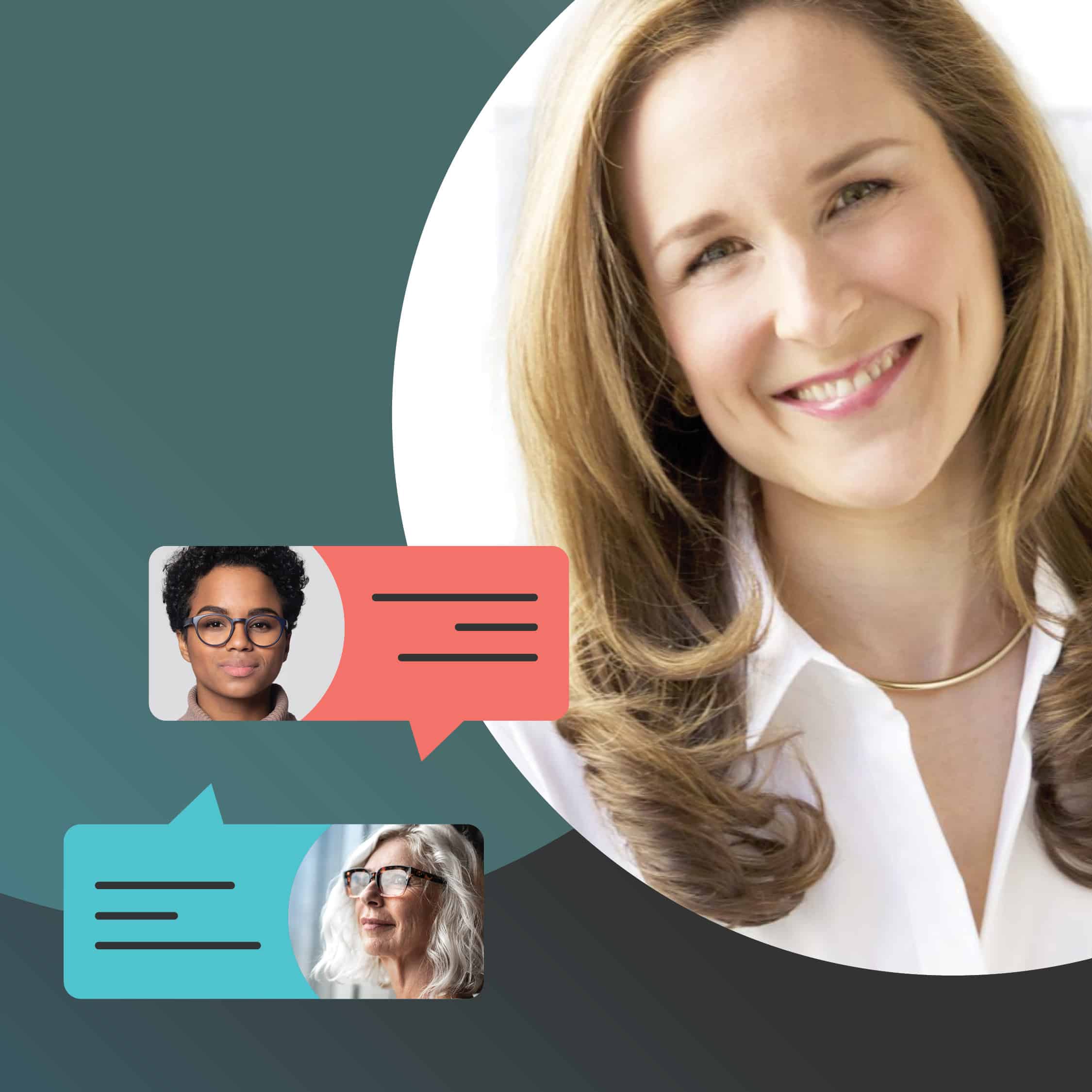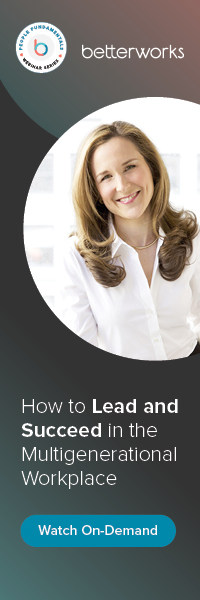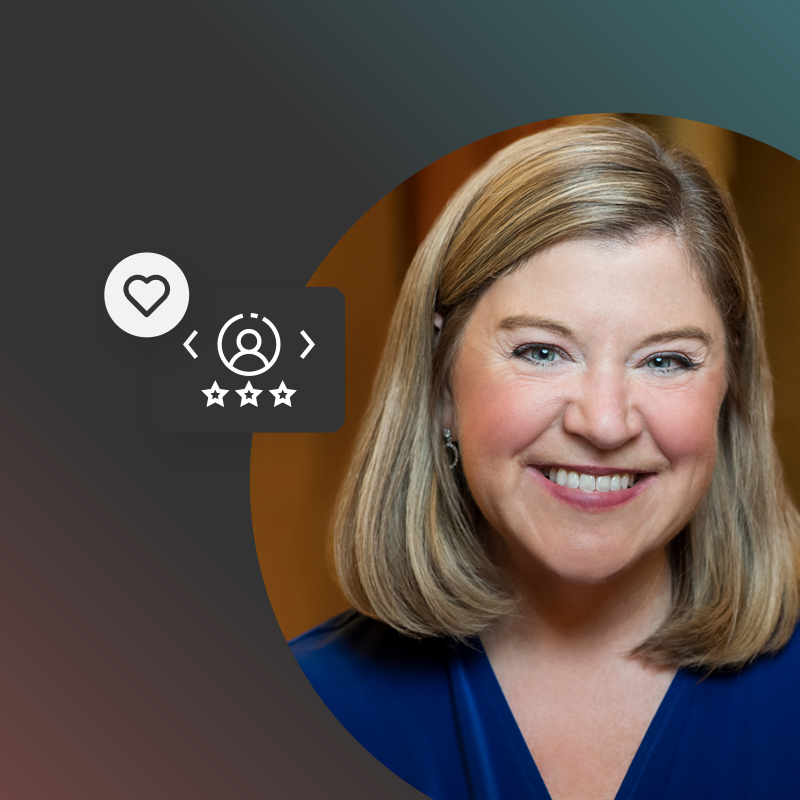Today’s workplaces host employees from five different generations. How can managers create synergy between team members in their first job and those who have worked for 40-plus years? And how can managers do this without taking sides and choosing one generation’s preferences over the others?
“Think of age as just another element of diversity,” says Lindsey Pollak, author of The Remix: How to Lead and Succeed in the Multigenerational Workplace. “We’ve always managed people of different genders, ethnicities, backgrounds, and locations, and “the same strategies apply from any diversity perspective.”
We invited Lindsey to share her expertise in our People Fundamentals webinar series. Before her talk in November, we asked Lindsey to share her advice on effectively managing employees of different ages and generational backgrounds — and bringing out the best in everyone.
What would a ‘perennial’ do?
No individual embodies all the stereotypes of their generation, but when we were born and entered the workforce have likely shaped our workplace habits and attitudes. Managing multigenerational workforces requires recognizing what’s best across each generation’s norms. Lindsey is a fan of fashion and tech entrepreneur Gina Pell’s perennial approach to identifying the strengths of each generation’s ways of working. Pell defines perennials as “ever-blooming, relevant people of all ages who live in the present time, know what’s happening in the world, stay current with technology, and have friends of all ages.”
“Be really committed to knowing your history,” Lindsey says, “which means talking to people who have been at your organization a long time or been in the industry a long time — and understanding and being really curious about their perspective and what things were like, and learning from the best of that. And being really curious and interested in keeping up with the times: What’s happening, what’s coming down the pike, what are the new things we can use?”
Lindsey once knew an older manager, for example, who asked his team to add new apps to his phone to see how younger people were interacting with technology. A younger manager she knew at an architectural firm, on the other hand, would ask older employees to show him how to use pencil on his designs, as he learned using computer software.
The key is to ask people about their workplace norms and habits, then listen openly to their responses. “If you really are a good listener — which I think is always the mark of a good manager — if you approach each generational perspective with curiosity rather than trepidation, I think that’s really powerful,” Lindsey says.
In any planning or project meetings you host, make sure that you’re getting perspectives from each generation. “You get more innovation, you make sure that you aren’t overlooking anything important, and you are ensuring not only that each generation is represented,” Lindsey says, “but that those who don’t align with their generation are also represented.”
Remixing the best of each generation
A perennial attitude helps you see what’s good about each generation’s norms. But when employees are bringing lots of great ideas to the table, how do you select the best ones?
Lindsey once worked with a nonprofit that had always hosted a sit-down dinner as a fundraiser. Some of the younger members suggested that younger donors might prefer a less formal cocktail party. There was back and forth on what to do, and the nonprofit ultimately offered both options — allowing donors of all ages to choose the program that best fit their interests.
“It doesn’t have to be either/or,” Lindsey says. “A lot of times, the solution is just to give more options. I call it the ‘remix’ — it’s not the old song or the new song, it’s a mix of both.”
Right now, we’re seeing an “all or nothing” conversation with return-to-office plans, a conversation that’s also complicated by generational differences. Lindsey suggests offering practical options with sensible boundaries.
“There are ways to figure things out where you do set some boundaries,” Lindsey says. “I think people want boundaries; they don’t want unlimited choices. That’s exhausting. It’s about more choices, but with boundaries.”
Leading with open conversations
Instead of making assumptions based on age, open a dialogue about what works best for each employee. Some situations might present a generational element, but what’s most important is understanding how each person, regardless of their background, works most effectively.
“Often, I think people are embarrassed to offer their strengths, and I think a lot of leaders don’t ask,” Lindsey says. If this is something you find challenging, she points to Michael Watkins’ model of asking questions to help you pinpoint ways to work together more effectively. Sample questions:
- If you and I are going to be working together, what do you like working on the best?
- What are you good at? What are your strengths?
- How do you like to communicate?
- What days of the week or times of the day are best for you?
“It doesn’t mean that I am promising to adapt to every single one of those things, but it does mean that we’ve had a conversation about it,” Lindsey says. “If I know that I’m really strong in the mornings, then I should let you know that it’s a good time for strategic thinking.”
In most cases, we hope that people notice these things about us, Lindsey says, but we rarely speak openly about them, even when doing so could make work better for everyone across all facets of diversity. Clarity and transparency are critical. “Be really clear on your leadership goals, and transparent and open with your policies, practices, and expectations,” Lindsey says.
When everyone understands the meaning and purpose behind the work, it’s easier for people — despite their differences — to rally behind a shared cause.
One example of this is running a political campaign. “If we’re all working to get a person elected because we believe in their views,” Lindsey says, “we have a goal, and we’re all aligned to that.” This alignment on meaningful goals can go a long way to tearing down barriers built on generational differences.
Above all else, treat every person as an individual and work together to find solutions that help everyone. “I don’t think it’s a sign of weakness to say that you as the leader don’t know the answer,” Lindsey says. “I think it’s a sign of strength, and I think it also often has the benefit of bringing a multigenerational perspective.”
Learn how to turn multigenerational understanding into a competitive advantage by joining us for Lindsey’s webinar.









